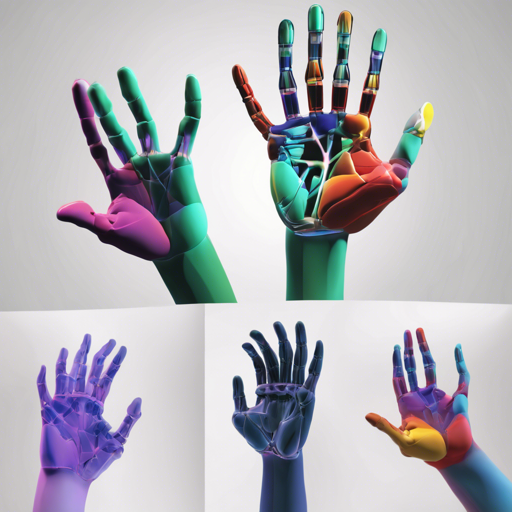Welcome to our comprehensive guide on using the ColorHandPose3D network for estimating 3D hand pose from a single RGB image! Whether you’re a seasoned developer or a curious beginner in the realm of computer vision, we’ve got you covered. Let’s dive into the setup, usage, and potential troubleshooting to get your 3D hand pose estimation running smoothly.
What is ColorHandPose3D?
ColorHandPose3D is an innovative Convolutional Neural Network (CNN) designed to estimate 3D hand poses from a single RGB image. Think of it as a highly skilled artist who, when presented with a simple 2D painting, can infer the depth and form of the depicted object, thereby creating a lifelike sculpture. This network analyzes the RGB image and estimates various hand poses effectively.
Usage: Performing a Forward Pass
Getting started with ColorHandPose3D is straightforward. Follow these steps to perform a forward pass:
- First, download the necessary data: the dataset from the project page.
- Unzip the downloaded file into your project’s root folder. This action creates three essential folders: data, results, and weights.
- Run the script run.py to trigger the forward pass of the network using the provided examples.
- You can compare your results with those in the results folder, which showcases the predictions made by the system.
Recommended System Requirements
Before diving into execution, ensure your system meets the following recommendations:
- Operating System: Ubuntu 16.04.2 (xenial)
- TensorFlow Version: 1.3.0 (GPU build with CUDA 8.0.44 and CUDNN 5.1)
- Python Version: 3.5.2
Preprocessing for Training and Evaluation
This section focuses on preparing the datasets for effective training and evaluation.
Rendered Hand Pose Dataset (RHD)
To work with the RHD dataset, follow these steps:
- Download the RHD dataset.
- Set path_to_db to the location of the dataset on your machine.
- Optionally modify the setup variable for either training or evaluation.
- Run
python3.5 create_binary_db.pyto generate binary files in *.databin* format based on your configurations.
Stereo Tracking Benchmark Dataset (STB)
For using eval3d_full.py, follow these instructions:
- Unzip the STB dataset.
- Run
cd .data/stbto navigate to the dataset folder. - Execute
matlab -nodesktop -nosplash -r create_dbto create the necessary binary file *.datastb_evaluation.bin*.
Network Training
You can train HandSegNet and PoseNet on the RHD dataset. Follow these steps:
- Refer back to the Preprocessing section to ensure necessary steps are completed.
- Start training HandSegNet with
training_handsegnet.py. - Start training PoseNet with
training_posenet.py. - Enable retraining in
eval2d_gt_cropped.pyby setting USE_RETRAINED = True. - Run
eval2d_gt_cropped.pyto evaluate the retrained PoseNet on RHD-e. - Repeat the retraining for HandSegNet by modifying
eval2d.py.
Evaluation Scripts
Use the following scripts to evaluate different parts of the architecture:
- eval2d_gt_cropped.py: Evaluates PoseNet on 2D keypoint localization.
- eval2d.py: Evaluates HandSegNet and PoseNet on 2D keypoint localization.
- eval3d.py: Evaluates approaches on lifting 2D predictions into 3D.
- eval3d_full.py: Evaluates the complete pipeline on 3D keypoint localization from RGB.
Troubleshooting
While using ColorHandPose3D, you may encounter some issues. Here are some common problems and their solutions:
- Inaccurate Evaluation Results: The evaluation script may compare the palm center to the wrist, leading to systematic errors. Using the correct evaluation settings can improve results by approximately 2-10%.
- Rounding Issue with RHD: A minor rounding problem in the first version of the RHD dataset may hinder exact reporting of results. It’s visually negligible but can affect measurements.
- General Errors: Always verify that you have the right versions of all Python packages listed under the recommended versions.
For more insights, updates, or to collaborate on AI development projects, stay connected with fxis.ai.
Conclusion
At fxis.ai, we believe that such advancements are crucial for the future of AI, as they enable more comprehensive and effective solutions. Our team is continually exploring new methodologies to push the envelope in artificial intelligence, ensuring that our clients benefit from the latest technological innovations.

